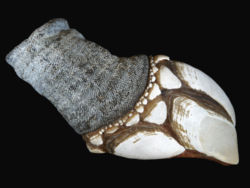I finally got some time to talk about my recent trip to Évora for the Open aLANtejo 2007. The conference was as great as I expected after my previous experience two years ago, with a wonderful organization by the people at the NEEI and really interesting talks, all of them related to open source.
The first day I talked about FLOSS business models and our experience at Igalia. I tried hard to avoid a commercial presentation and I focused on the main challenges for doing sustainable development of innovative free software from small companies; the goal was to motivate students and professionals to start free software companies in Portugal. Quite a lot of people got interested and I kept talking about this topic during the rest of the weekend with both students from the university and people managing small open source companies.
On Saturday, I presented Gnome Mobile and Maemo, going from a more theoretical part about what is going on in the Gnome mobile sphere to the details of the specific projects and the ways one can contribute to them. The talk got even more interest than the previous one; at the end of the presentation, quite a lot of people came to see the N800 and to ask about ways to start developing new applications for Maemo or using this kind of devices for their specific (business) purpose. Really nice to have this kind of feedback; one feels that the level of coolness of all the ‘mobile’ side of Gnome is really very high.
The conference was also nice cause it allowed me to meet cool people like Flávio Glock, Isaac Clerencia, Erica Brescia, Daniel Liszka, Daniel López or Jono Bacon who were also invited speakers.
I look forward to going to the beautiful city of Évora again in the near future, and I advise everyone to not hesitate if you get an invitation for this conference.


